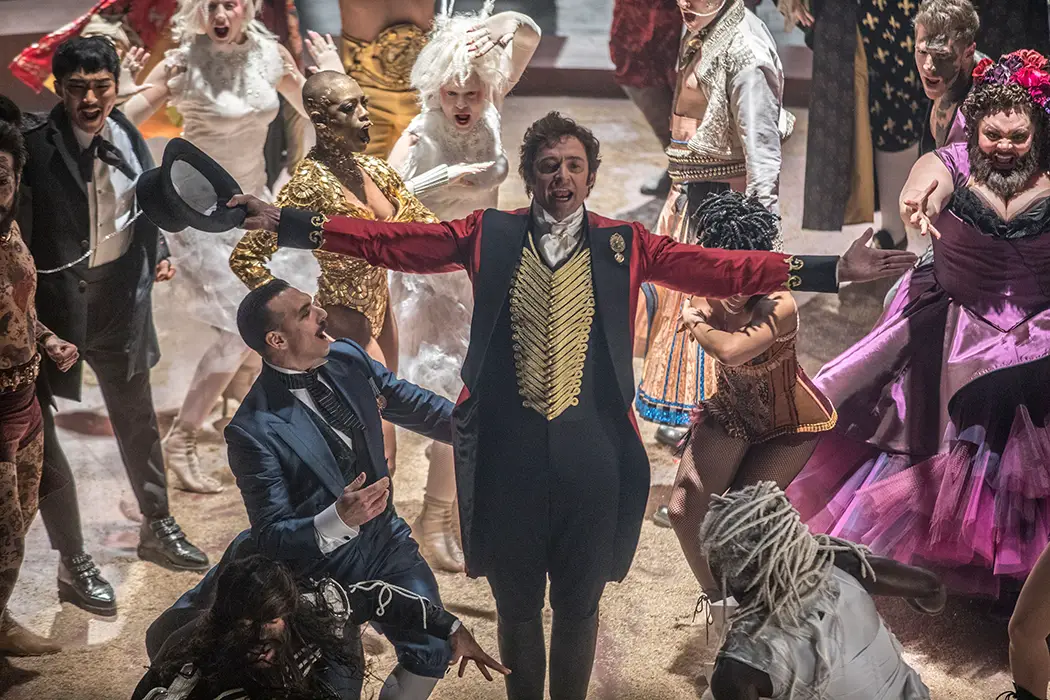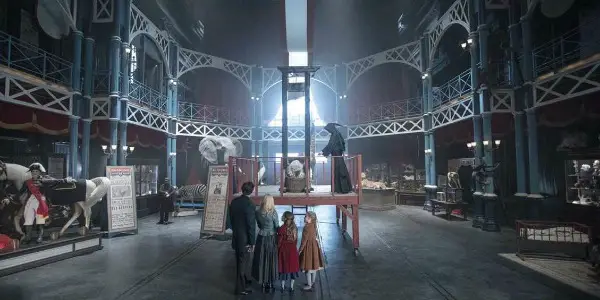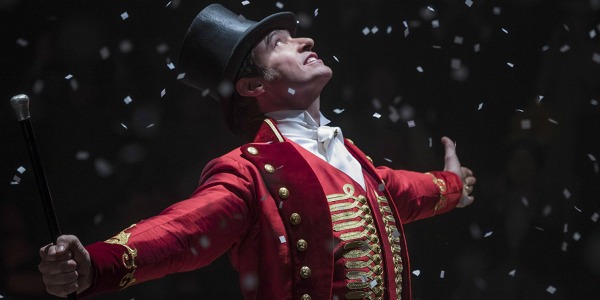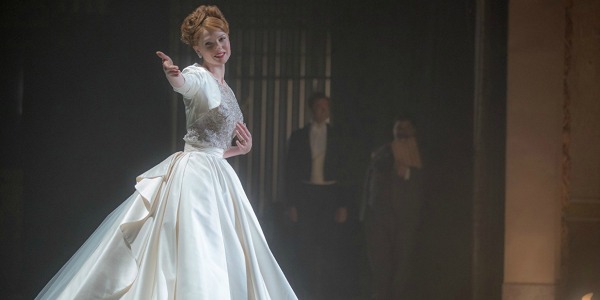THE GREATEST SHOWMAN: An Enjoyable Musical Fantasy

Alex Arabian is a freelance film journalist and filmmaker. His…
Relatively unknown visual effects artist Michael Gracey makes an applaudable directorial debut with The Greatest Showman, a fictional musical loosely based on the life of P.T. Barnum, founder of the Barnum and Bailey Circus.
Even though the rookie, who had only done commercials prior to this film, became a bit James Mangold to oversee re-shoots and post-production due to concerns of inexperience, the end result of The Greatest Showman turned out fairly decent. Mangold, familiar with directing musical arrangements with Walk the Line, would end up receiving an executive producer credit.
Jenny Bicks (known primarily for her work on the television show Sex and the City), and Oscar winner Bill Condon (Gods And Monsters) craft a screenplay that, though it is a bit spasmodic, succeeds largely due to its dazzling musical numbers. Both a celebration of the inception of show business and a rags-to-riches story, The Greatest Showman carries with it universal themes that will relate to most audiences.
Hugh Jackman as P.T. Barnum, Michelle Williams as his wife, Charity, Zac Efron, Zendaya, Rebecca Ferguson as famed Opera singer Jenny Lind, and Keala Settle as Lettie Lutz The Bearded Woman all give exceptional performances, helping to bring Condon, Bicks, and Gracey’s vision alive. This was a passion project for Jackman, who, as a triple threat, excels in every aspect of his performance, pouring his heart and soul into the picture. Condon is no stranger to musicals, having scripted Chicago, Dreamgirls (which he also directed), and helmed Beauty and the Beast, and it certainly shows.
A Fictional Rendering Of The Greatest Show On Earth
The Greatest Showman is a fantasy. With lavish set pieces, giant spectacle, and jaw-dropping imagery in every frame, it establishes that fact visually, first. This version of P.T. Barnum is depicted as slightly more poor, growing up in order to emphasize the motif of the American Dream more prominently, which the real life Barnum epitomized.
Condon and Bicks add drama, social commentary about classism, racism, and prejudice, as well as themes of love, pursuance of happiness and passion over financial success, and infidelity; it’s remarkable that they manage to hit most of these themes and motifs on the head in a PG-rated film.

Once one wraps their mind around the fact that The Greatest Showman is primarily fiction, it allows them to simply enjoy the world that Gracey, Mangold, cinematographer Seamus McGarvey (Nocturnal Animals, Anna Karenina), production designer Nathan Crowley (The Dark Knight, Interstellar), set decorator Debra Schutt (Noah, Spider-Man), art director Laura Ballinger (Brokeback Mountain, The Fighter), and costume designer Ellen Mirojnick (Behind the Candelabra, First They Killed My Father) inexhaustibly create.
The film is truly a treat for the eyes. It isn’t necessary to go into every minute detail about what is fact and what is fiction in The Greatest Showman, but quite a few dates were moved around and characters added for romance and conflict.
P.T. Barnum The Showman
Was P.T. Barnum the proponent of diversity and voice for the disenfranchised and outcasts of society that Condon and Bicks portray him as in The Greatest Showman? For the most part, yes, although, back in the 1830s, he was rather exploitative with his “freak shows,” and reportedly got his start showcasing an elderly black female slave he purchased, advertising her as the oldest woman in the world at a far-exaggerated “161 years old” and one of George Washington’s nurses. However, in the film and in reality, P.T. Barnum always paid his “acts,” and provided them with a sense of community, bringing them out of the shadows and into a place where society, at that time in America, would accept them for who they were.
Indeed, Barnum, like in the film, was desperate and determined to find people and acts that would shock mainstream society, hoping to rattle them into accepting all types of human beings. Barnum was in fact a pro-Unionist, something that would lead to his museum being burned down due to Confederate opposition, as opposed to the persistent protests of the “freaks” that turned violent, one of the things leading to the fire in the film. In both The Greatest Showman and in real life, P.T. Barnum was an idealist, a dreamer, an outside thinking entrepreneur, and, coming from a humble background, a man desperate to prove himself in the eyes of society.

Jackman plays Barnum with great eagerness, at times a necessary blind desire for fame at all costs, sensitivity, soul, and ultimately humility. He carries the entire film on his broad shoulders. The range of Jackman is quite remarkable and virtually unparalleled in the film industry; how he can go from portraying a bad-mouthed, bestial superhero in Logan directly to a spritely performer singing show tunes and dancing with ease in The Greatest Showman is a marvel, pun intended. In fact, Jackman said playing the role of P.T. Barnum was more physically challenging than playing the role of Logan.
Paralleling Romances And Toe-Tapping Musical Arrangements
Zendaya as the black trapeze performer Anne Wheeler and Efron as the high society, privileged white playwright Phillip Carlyle are fictional characters, singularly created to add a level of romance as well as commentary about classism and racism during a time in America when its values were incredibly backwards and downright morally repugnant.
Condon and Bicks use this setting to highlight the ludicrousness of the frowning upon of falling in love both beneath one’s class level in society and interracial relationships. Carlyle ultimately estranged himself from his wealthy parents, sacrificing a hefty inheritance for a life of love with Wheeler and a family at the Barnum Circus. Wheeler and Carlyle’s relationship prompts the initial brawl that leads to the fire on top of the protests.
Efron returns to his High School Musical roots in The Greatest Showman, and he hasn’t lost a step, vocally. Zendaya and Efron have outstanding onscreen chemistry and the two Disney alumni make for arguable the most impressively orchestrated and touching duet in the film with “Rewrite The Stars.” Zendaya gives the finest performance of her young acting career. Efron as Carlyle does an apt job of filling in for Jackman’s Barnum’s shoes while he’s away on tour with the great Jenny Lind, with whom he’s portrayed as being infatuated with in the film.
Barnum and Charity’s story, from childhood crushes to married adult lovers, is a bit rushed and brushed over. The story doesn’t quite focus as much on the young P.T. Barnum and his father’s hardships as Charity’s family servants, abused and financially struggling, as it can to emphasize how far Barnum came when he eventually built his empire. His personal life with his family is left out of a lot of the script, save for his daughter’s ballet subplot, and there are a few off-putting time jumps.
However, Williams and Jackman provide a wonderful foundation and main theme for the film with the memorable and inspirational tune, “A Million Dreams.” Williams impresses in her own solo performance with “Tightrope,” a song she sings as she longs for Barnum while he’s away with Lind.

The story focuses quite a bit on a fictitious subplot of Barnum and Lind, with Condon and Bicks adding a scandal while they are on tour, causing Charity to leave Barnum. Though this adds conflict in an otherwise mostly idyllic story and prompts Barnum to refocus his values on his circus and family, it portrays Lind in an unflattering light by making her look like she was only on the American singing tour because of her love for Barnum.
In real life, their relationship was strictly professional, and Charity and Barnum never had a marital separation. However, Ferguson shines as Lind, and with The Voice Season 3 finalist Loren Allred providing her magnificent vocals, gives the most mesmerizing solo in The Greatest Showman with “Never Enough.”
The Greatest Showman: A Thoroughly Entertaining, Albeit Slightly Over-Ambitious Musical
The musical numbers by John Debney, Benj Pasek, Justin Paul, and Joseph Trapanese are poppy, considerably simple, and extremely digitally enhanced, though they are undoubtedly catchy and will likely appeal to the younger generations. The crew, especially Gracey, McGarvey, Crowely, and Mirojnick, do an amazing job of transporting the viewer back to 19th century America. Though Condon and Bicks‘ story tries to cover a little too much ground, glossing over subplots and cramming several themes into its short, 105-minute runtime, a few of which it doesn’t focus enough on, the whole is greater than the sum of its parts.
Jackman gives one of the finest performances of his career, but without the help of his excellent supporting cast, The Greatest Showman, like P.T. Barnum’s Circus without its acts, would be nothing. The film is a fine example of importance and payoff of collaboration and inclusion in Hollywood. In finding the perfect lead in Jackman as Barnum, providing moving and invigorating musical numbers executed by a stellar secondary cast, impressive visuals, and covering timely topics, The Greatest Showman overcomes its narrative shortcomings.
Are you a fan of musicals? Did you ever go to the Barnum and Bailey Circus before it closed earlier this year? What was your favorite song in The Greatest Showman?
The Greatest Showman opened on December 20, 2017 in the U.S. For all international release dates, see here.
https://youtu.be/jr9QtXwC9vc
Does content like this matter to you?
Become a Member and support film journalism. Unlock access to all of Film Inquiry`s great articles. Join a community of like-minded readers who are passionate about cinema - get access to our private members Network, give back to independent filmmakers, and more.
Alex Arabian is a freelance film journalist and filmmaker. His work has been featured in the San Francisco Examiner, The Playlist, Awards Circuit, and Pop Matters. His favorite film is Edward Scissorhands. Check out more of his work on makingacinephile.com!












